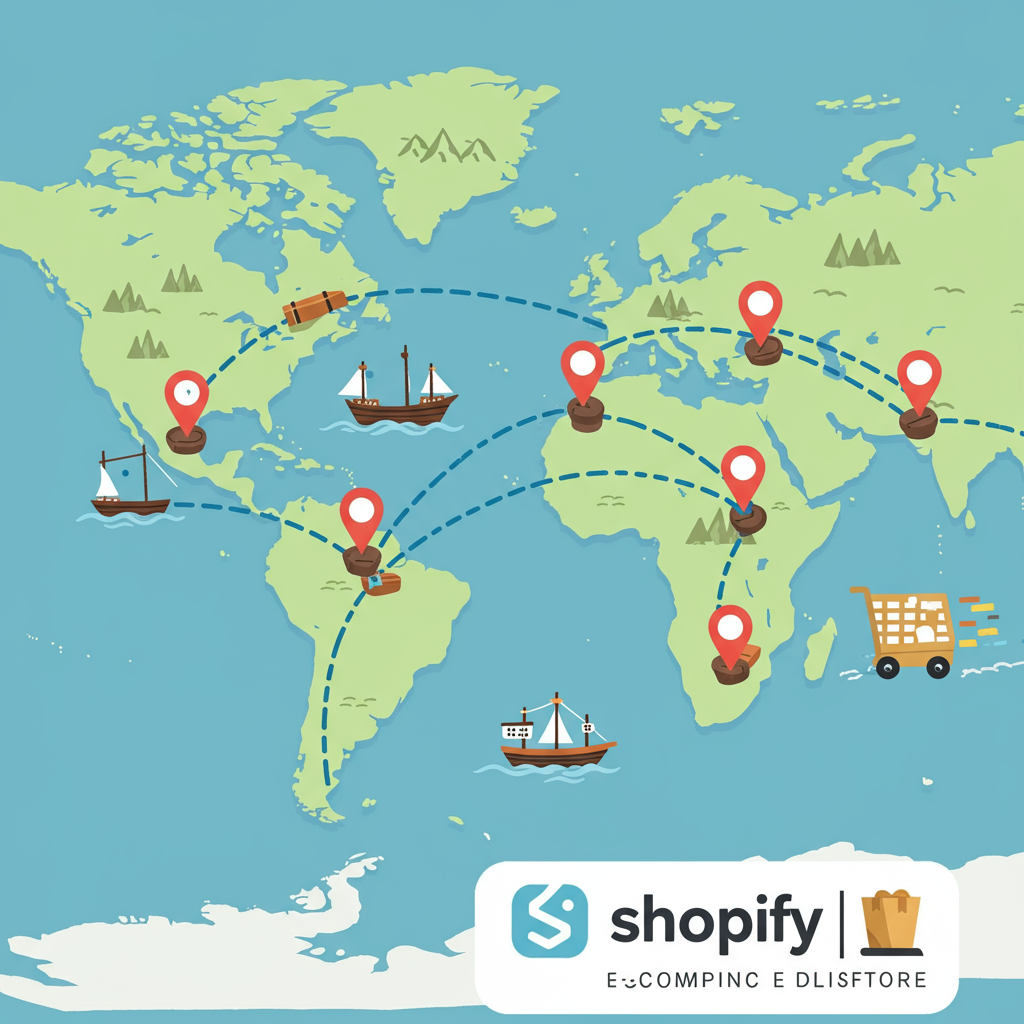A comprehensive guide to expanding your Shopify store’s horizons and shipping products worldwide.
Stepping into the world of international e-commerce can feel like a monumental leap for any Shopify merchant. I understand that feeling of excitement mixed with a touch of apprehension.
The potential for growth, however, is immense. Untapped markets, new customer bases, and the sheer satisfaction of seeing your products reach corners of the globe you never imagined are incredibly rewarding.
Over my years in e-commerce, I’ve seen many merchants hesitate at the thought of international shipping, often due to perceived complexities or a lack of clear guidance.
My goal with this article is to demystify the process for you. I want to provide a clear, actionable strategy for setting up and managing international shipping directly from your Shopify store.
The first, and arguably most critical, step in any international shipping strategy is thorough research and compliance.
Every country has its own unique set of import regulations, customs duties, taxes, and prohibited items. I cannot stress enough how important it is to understand these before you even think about shipping.
You’ll encounter terms like DDP (Delivery Duty Paid) and DDU (Delivery Duty Unpaid). I generally recommend being transparent about duties and taxes, or even collecting them upfront if possible, to avoid surprises for your customers.
Always check for restricted or prohibited items. What’s legal to ship in your country might be banned elsewhere. This could include certain types of electronics, food items, or even specific materials.
I often use official government customs websites or consult with a customs broker for specific country regulations. It’s an investment that saves headaches later.
Next, let’s talk about shipping carriers. You have several excellent options, each with its own strengths: USPS, FedEx, DHL, and UPS are the major players I typically consider.
For smaller, lighter, and less time-sensitive international shipments, I’ve found USPS (via their international services like Priority Mail International) to be quite cost-effective.
However, for speed, reliability, and robust tracking, I often lean towards FedEx, DHL, or UPS. They offer premium services that can be crucial for high-value items or urgent deliveries.
Sometimes, a hybrid solution works best. You might use a consolidator who picks up packages from you and then hands them off to a local carrier in the destination country.
Now, let’s tackle shipping rates. How you charge for shipping can significantly impact your conversion rates. I’ve experimented with a few strategies.
Flat-rate shipping can be simple, but it requires careful calculation to ensure you’re not losing money on distant or heavy international orders.
Calculated rates, often directly integrated with Shopify and your chosen carriers, provide the most accurate pricing. This is my preferred method for international orders as it passes the exact cost to the customer.
Offering ‘free international shipping’ can be a powerful marketing tool, but remember, it’s never truly free. I always factor the average shipping cost into my product pricing when offering this.
Proper packaging is non-negotiable for international shipments. Your package will endure a longer journey and more handling. I always use sturdy boxes and ample protective materials.
Customs forms are mandatory. You’ll typically need a CN22 or CN23 form, depending on the value of the goods. I always fill these out accurately and completely.
Accurate Harmonized System (HS) codes are essential. These codes classify your products for customs and help determine duties. I make sure to include them on all my customs declarations.
Providing clear tracking information is paramount. International shipping can take time, and customers appreciate being able to monitor their package’s journey every step of the way.
Be prepared for international customer service inquiries. Time zone differences, language barriers, and questions about customs can arise. I ensure my support team is equipped to handle these.
A clear and concise international returns policy is also vital. I outline who pays for return shipping, how refunds are processed, and any conditions for international returns.
Within Shopify, you’ll want to set up your shipping zones. I create specific zones for different countries or regions, allowing me to apply unique rates and rules.
I also explore Shopify apps designed to streamline international shipping. Apps can help with duty calculation, automated customs forms, and even localized currency conversion.
Consider offering a localized experience. I use currency converters on my store, and for major markets, I even consider translating key parts of my website.
Tailoring your marketing efforts to international audiences can also yield great results. I research popular payment methods and cultural nuances in target countries.
Ultimately, international shipping is a journey, not a one-time setup. I continuously monitor my shipping performance, customer feedback, and carrier options.
Don’t be intimidated by the initial setup. The global market is vast, and with a solid strategy, your Shopify store can truly thrive on an international scale.
What do you think about this article? I’d love to hear your thoughts and any international shipping tips you’ve found helpful!
By following these steps, you’ll be well on your way to confidently shipping your products across borders and unlocking incredible new growth opportunities for your Shopify business.






